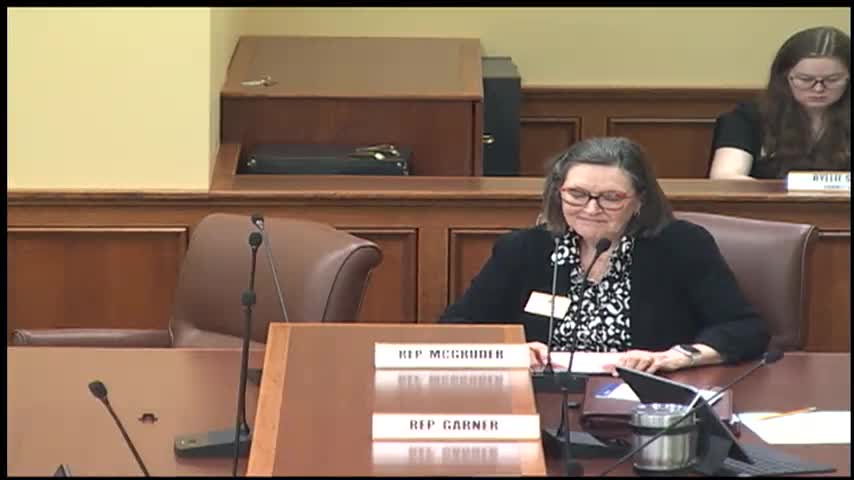Sponsor pulls bill on teacher protections, interim learning environments to revise with stakeholders
March 15, 2025 | EDUCATION COMMITTEE- HOUSE, House of Representatives, Committees, Legislative, Arkansas
This article was created by AI summarizing key points discussed. AI makes mistakes, so for full details and context, please refer to the video of the full meeting. Please report any errors so we can fix them. Report an error »

Representative Scott Richardson introduced a bill aimed at reducing assaults on teachers by creating a defined process for removing a student from a classroom after violent or abusive behavior and placing the student in an interim learning environment for up to 10 days while stakeholders evaluate supports and next steps.
Nut graf: The bill would create a short‑term, nonpunitive interim learning environment (up to 10 days) to give schools time to conduct a conference with the principal (or designee), teacher, school counselor and other appropriate staff, perform a manifestation determination review where applicable, and identify supports (including therapeutic or trauma‑informed services) needed for the student to return to class. The sponsor also proposed funding adjustments so districts would receive support for short stays in alternative learning settings.
Committee discussion focused on how interim learning environments would differ from existing alternative learning environments (ALE), how services and funding would be provided for small and large districts, the need to involve trauma‑informed counselors or licensed therapists, and whether the bill might inadvertently send students to punitive settings or place other students at risk. Several superintendents and education leaders said districts already run programs or pilot options but that comprehensive therapeutic programs cost significant funds (one example cited a program costing roughly $420,000 a year).
Richardson and witnesses agreed to refine language clarifying that interim placements must provide the same services and not be punitive, to explicitly include trauma‑informed or therapeutic personnel in review conferences, and to work on funding details. The sponsor said he would withdraw the bill for further work and intends to bring a revised measure back after additional stakeholder consultation.
Ending: The bill was withdrawn to allow sponsors, district leaders and other stakeholders to refine definitions, funding mechanisms and service requirements so districts can safely manage violent incidents while protecting teachers and students.
Nut graf: The bill would create a short‑term, nonpunitive interim learning environment (up to 10 days) to give schools time to conduct a conference with the principal (or designee), teacher, school counselor and other appropriate staff, perform a manifestation determination review where applicable, and identify supports (including therapeutic or trauma‑informed services) needed for the student to return to class. The sponsor also proposed funding adjustments so districts would receive support for short stays in alternative learning settings.
Committee discussion focused on how interim learning environments would differ from existing alternative learning environments (ALE), how services and funding would be provided for small and large districts, the need to involve trauma‑informed counselors or licensed therapists, and whether the bill might inadvertently send students to punitive settings or place other students at risk. Several superintendents and education leaders said districts already run programs or pilot options but that comprehensive therapeutic programs cost significant funds (one example cited a program costing roughly $420,000 a year).
Richardson and witnesses agreed to refine language clarifying that interim placements must provide the same services and not be punitive, to explicitly include trauma‑informed or therapeutic personnel in review conferences, and to work on funding details. The sponsor said he would withdraw the bill for further work and intends to bring a revised measure back after additional stakeholder consultation.
Ending: The bill was withdrawn to allow sponsors, district leaders and other stakeholders to refine definitions, funding mechanisms and service requirements so districts can safely manage violent incidents while protecting teachers and students.
View full meeting
This article is based on a recent meeting—watch the full video and explore the complete transcript for deeper insights into the discussion.
View full meeting
